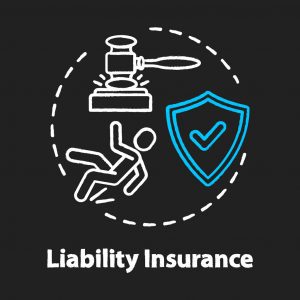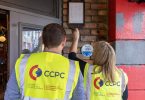PIAB cheaper than litigation finds 2nd NCID Insurance Report

“Insurers cannot continue to delay delivering reduced premiums, otherwise all the benefits of the reforms currently being processed and the recent High Court decisions, flow directly into their back-pockets as profit.” – Peter Boland.
So finds the Central Bank of Ireland which recently published the second annual Employers’ Liability, Public Liability and Commercial Property Insurance Report of the National Claims Information Database.
This report follows the first annual Report which was published in July 2021 and the publication of reports of the NCID on Private Motor Insurance.
The data produced here relates to premiums and income, claims, expenses and settlement costs.
Other key findings include:
- For injury claim settlements where the total cost of settlement is less than €150k (comprising 93% of claimants) the average compensation costs are relatively similar for claims settled through PIAB and litigation. However, the average legal fees for claims settled through litigation are significantly higher.
- Injury claims represent the largest number of claims and costs for Employers’ Liability and Public Liability insurance. Between 2015 and 2020, these claims represented 68% of claimants and 92% of settlement costs.
- Litigation was the most common channel for settling Employers’ Liability and Public Liability injury claims, accounting for 58% of injury claimants and 81% of injury costs between 2015 and 2020. This compares with 28% of claimants and 12% of costs for claims settled directly with the insurer and 14% of claimants and 8% of costs for claims settled via the PIAB.
Insurers’ income and expenditure on Employers’ Liability, Public Liability and Commercial Property insurance shows an Operating Loss of 11% of total income in 2020, primarily due to an Operating Loss of 30% on the commercial property line of business.
Reinsurance arrangements that insurers had in place reduced the Operating Loss by 12% of total income in 2020. Thus, across all years (2009 to 2020) there’s been an Operating Profit of 3% of total income.
The Report also highlights the following relating to the profitability of the underlying insurance business (that is, excluding investment income and any other earnings) from 2009 to 2020:
- 73% of gross earned premium has been used to cover claims and expenses related to settling claims. 27% has been used to cover other underwriting expenses.
- The gross cost of claims and underwriting expenses was approximately equal to gross earned premium over the period, leading to a Combined Operating Ratio of 100% gross of reinsurance. The COR was 108% net of reinsurance.
Employers’ Liability, Public Liability, and Commercial Property Premiums
The majority of policies sold (84% in 2020) were package policies which included a combination of Employers’ Liability, Public Liability or Commercial Property. For these policies there was an increase of 2% in average premium from 2019 to 2020.
This follows a 25% increase over the years 2013 – 2019 and a 17% decrease over the years 2009 – 2013.
“It’s important to note that liability insurance spans a broad range of business sectors, each of which covers a variety of risks,” points out the Central Bank, “It’s therefore extremely challenging to provide meaningful data on the overall ‘average’ cost of claims or premiums per policy as it may not reflect the reality of a specific sector or the size of its insured business.”
Commenting on the NCID report, Mark Cassidy, the Central Bank’s Director of Economics and Statistics, said that it could be seen from that data that, “Insurers made a significant Operating Loss on the Commercial Property line which contributed to an overall Operating Loss on Employers’ Liability, Public Liability and Commercial Property lines.
“The Report also indicates that claims settled through litigation cost more and take longer to settle than those settled directly with the insurer or via the PIAB,” he continued, “This data reflects findings in both the previous report and in reports of the NCID for Motor Insurance. Future reports will provide initial insights on the effect of the Personal Injury Guidelines.”
The Alliance for Insurance Reform has welcomed the publication of the second annual Report.
“The data the NCID publishes is pivotal to analysis of the Irish insurance market,” said Peter Boland, Director of the Alliance, “Having said that, there is currently an 18-month lag in the liability data. So, while the data trends in this report on 2020 are consistent with the trends in the 2019 report, with the exception of a short-term Covid-19-related impact on property insurance due to business interruption claims, of more significance are the developments since 2020 – in particular the implementation of the Judicial Guidelines in April 2021, the recent High Court decisions supporting those Guidelines, combined with the sharp downward trend in total personal injury claims in recent years.
“Insurers cannot continue to delay delivering reduced premiums,” he continued, “Otherwise, all the benefits of the reforms currently being processed and the recent High Court decisions, flow directly into their back-pockets as profit. We expect substantial reductions to the cost of liability cover and further, proportionate reductions to motor insurance premiums immediately.”








